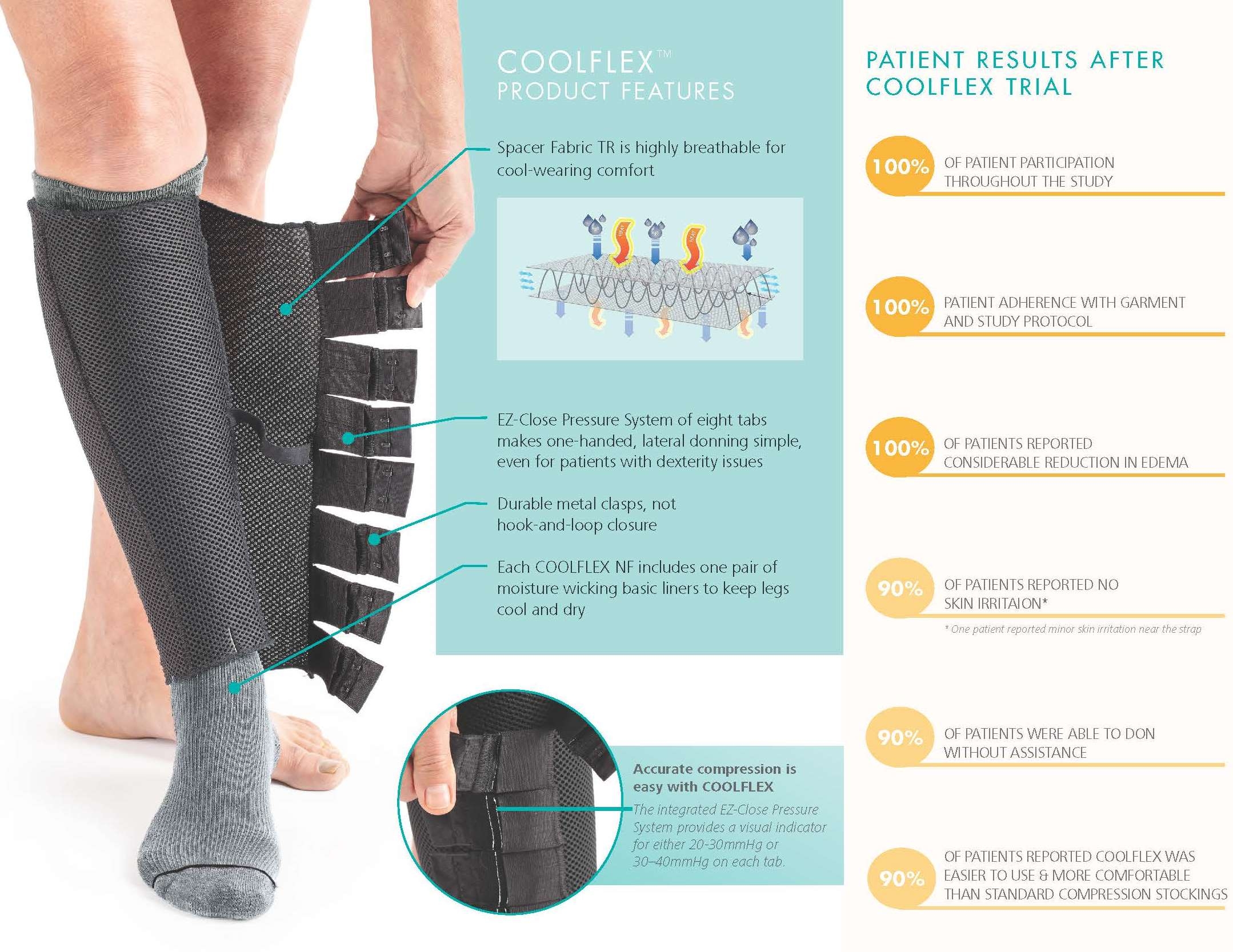CoolFlex - Novel Compression That Addresses Compliance Issues | Bandages Plus Blog
Luis. J. Borda, M.D., Joshua Mervis, B.A., Penelope A. Hirt, M.D., Jose A. Jaller, M.D., Evan Darwin, B.A., Robert S. Kirsner, M.D., and Hadar Lev-Tov, M.D.
A Case Study from the Department of Dermatology and Cutaneous Surgery, University of Miami Miller School of Medicine
Increasing patient compliance with the Sigvaris CoolFlex™ compression wrap
Chronic Venous Insufficiency (CVI) affects approximately one third of all U.S. adults, and is characterize by those who suffer from lower extremity varicose veins, swelling and pain. If not properly treated, CVI may lead to the development of venous leg ulcers (VLU), which are the most common type of chronic leg ulcers and which tend to become malodorous, painful and infected.
Compression of the lower extremities is the most effective treatment for CVI, as well as being the primary and secondary prevention of VLU. While a variety of compression garments are widely available, most have significant disadvantages that inhibit patient use and compliance, including cost, difficulty with application and discomfort.
Sigvaris USA recently introduced the CoolFlex™ compression wrap which is a new two-piece compression garment that was designed to address patient use and compliance issues, by combining the appropriate needed compression with ease of use, comfort, temperature control and aesthetic appeal.
Material and Methods
The CoolFlex™ compression system is composed of two pieces - a Transition silver liner and the CoolFlex™ compression wrap itself. The Transition liner consists of a modified compression stocking in that it provides light compression from the toes to ankle only, and acts as an inner protective layer for the skin. The CoolFlex™ compression wrap is the outer layer of the system and is worn around the gaiter area, providing compression from the ankle to the knee.
Patients with CVI for whom the use of traditional methods of compression (i.e., stockings) were not practical, were selected to try and evaluate the CoolFlex™ compression system. Reasons for patient inability to wear traditional compression stockings included issues of limited dexterity, lack of physical strength, lack of flexibility, pain from use and skin irritation.
Each patient selected for trials was measured for the appropriate garment size, while instruction and demonstration regarding the proper use of CoolFlex™ was provided to ensure correct and accurate use. All patients were also subsequently observed independently donning the garment without any assistance.
Results
The average duration of CoolFlex™ use was 104 days and 100% of the patients studied were still using the compression garment at the completion of the study. In assessing various patient outcomes, either all, or a large majority of the patients included in the study reported positive outcomes from use of the garment, summarized as follows:
- 100% of patient participation throughout the study
- 100% patient adherence with garment and study protocol
- 100% of patients reported considerable reduction in edema
- 90% of patients reported no skin irritation
- 90% of patients were able to don the garment without assistance
- 90% of patients reported CoolFlex™ was easier to use and more comfortable than standard compression stockings
- 80% of patients reported no development of new ulcers during the period of use
Conclusions
While further comparative trials are needed to confirm the promising results, the new CoolFlex™ compression garment appears to be well-suited for all, but particularly useful for patients who are not amendable to traditional modes of compression. Comfortable to wear, CoolFlex™ seemingly has achieved wide acceptance among patients, resulting in greater adherence to use among those with CVI, helping to effectively manage edematous conditions.
To download a copy of the University of Miami case study, "Novel Compression Garment Prototype to Improve Adherence in Subjects Who Cannot Wear Compression":


